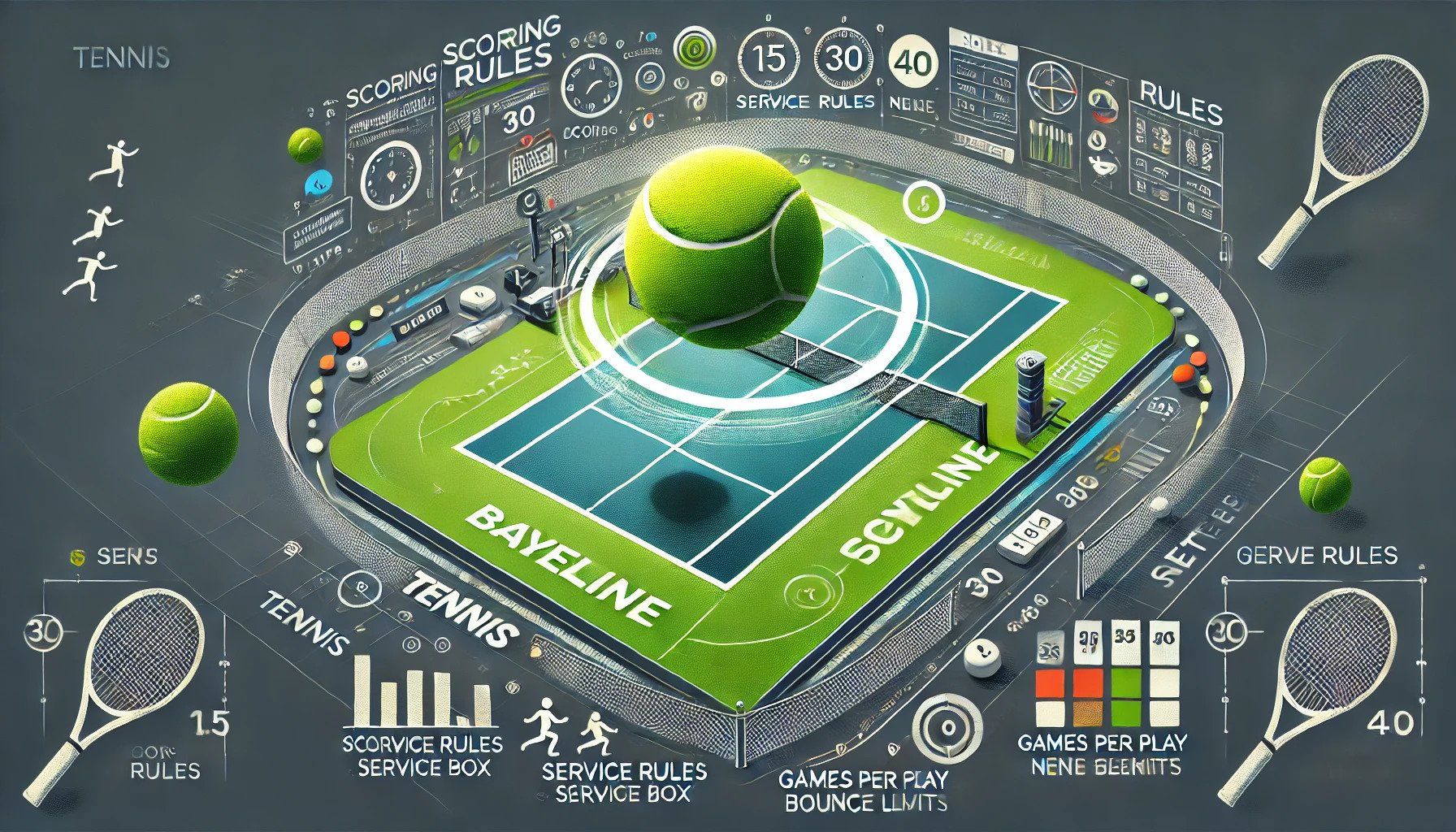
RULES OF TENNIS
Rules of Tennis
In tennis, the rules govern the gameplay and ensure fair competition between players. Here are the key rules of tennis in detail:
Scoring:
Tennis matches are typically played in sets, and sets are made up of games. To win a game, a player must win at least four points and have a two-point lead over their opponent. The points are counted as follows:
0 points = "Love"
1 point = "15"
2 points = "30"
3 points = "40"
If both players have 3 points (40-40), it's called "Deuce."
From Deuce, a player must win two consecutive points to win the game.
Serve:
The right to serve alternates between the two players or teams at the start of each game and each set.
The server must stand behind the baseline and within the confines of the service box when serving.
The serve must land diagonally across the net in the opponent's service box. It must clear the net and land in the service box on the opposite side. If the serve hits the net and lands in the correct service box, it's called a "let" and is replayed without penalty.
Play:
After the serve, players hit the ball back and forth over the net until a point is won or lost.
The ball can bounce once in the opponent's court before being returned, but it must be returned before it bounces twice.
Rules for Points and Games:
Players switch sides of the court after odd-numbered games (1st, 3rd, 5th games, etc.) in a set and after each set.
Set and Match:
A set is won by the first player to win at least six games and have a two-game lead over their opponent. If the set score reaches 6-6, a tiebreaker is usually played.
A match is typically best-of-three sets or best-of-five sets in major tournaments. The winner is the first player to win the required number of sets.
Tiebreaker:
In most sets, if the score reaches 6-6, a tiebreaker is played. The winner of the tiebreaker is the first player to reach at least seven points and have a two-point lead over their opponent. The sequence of serving and receiving in the tiebreaker alternates every two points.
Faults and Penalties:
If a player fails to execute a legal serve, it's called a "fault." Two consecutive faults result in a "double fault," which gives the opponent a point.
Other infractions, like touching the net, hitting the ball before it crosses the net, or hindering the opponent's ability to play the ball, can result in penalties or the loss of a point.
Let:
A let is called when a point is replayed due to certain hindrances or interruptions during the point, such as the ball hitting the net on a serve and landing in the correct service box.
These rules ensure that tennis matches are conducted fairly and that the competition is conducted with proper sportsmanship and adherence to the game's standards.
“She was the single artificer of the world
In which she sang.”

